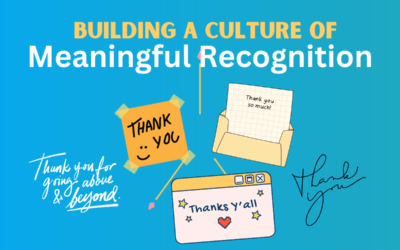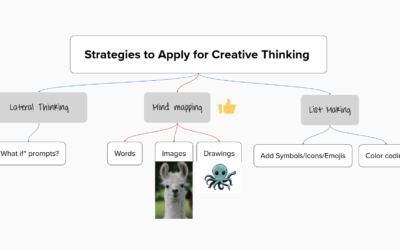
Now that you’ve got a Sponsorship Sheet, how do you effectively get sponsors?
1. Organize & Study Your Organization’s Sponsorship History
Before starting outreach, it is essential to review your organization’s relationship data. Use your Donor Management Software (DMS) or database to identify corporations, contacts, foundations, or individuals who have previously supported your organization. Go through your emails to ensure that all current contacts and prospects are added—at the individual and household/company levels.
If you’re unsure of the accuracy of your data, or your organization is missing a few years of data, it is time for some sleuthing:
- Check your website or past marketing emails for previous sponsor listings.
- Search shared drives or spreadsheets for donor notes and details.
- Review project management tools like Asana or Click Up for old notes.
- Look through printed event programs or sales lists for contact info.
- Reach out to previous development staff or long-time leaders for insights.
If you don’t have a DMS – and you’re working off of spreadsheets – it’s time to set one up! We recommend Little Green Light, Neon One, or Donor Dock – all are easy-to-use relationship-driving software tools for small nonprofits. We can help you get started! Email us at info@nextinnonprofits.com
Identify your sponsor segments once you have the complete picture of your data and organizational history; this allows you to tailor your outreach and engagement strategies more effectively.
Segment by:
- Current Sponsors
- Recent Lapsed Sponsors (Last 2 Years)
- Past Sponsors (2+ Years Ago)
- New Prospects connected to your organization (Board member’s company, etc.)
- Cold Pitch Prospects with no known connection to your organization
Understanding your sponsor segments allows you to personalize your messaging, prioritize your efforts, and focus on building or renewing relationships with sponsors most likely to support your organization. Consider the value of past relationships—are there opportunities to reconnect with former corporate sponsors who haven’t renewed in a few years? Investigate why they didn’t renew. Was it due to a job transition, and who had the strongest connection with them? Understanding these factors can help you determine if the door is still open. Perhaps the previous contact retired, and the new person in the role might be interested in renewing after you remind them of your shared history. Even if they no longer offer sponsorships, the VP might be open to joining your board of directors. Don’t write off these older organizational relationships just yet.
2. Deepen Relationships With Your Current & Recently Lapsed Sponsors
This segment is significant because they’re the most engaged with your organization; you don’t need to sell them on what you do! Instead, it would be best to go the extra mile for these relationships to maintain, and truly nurture them to support revenue goals and save you time in the long run. Your primary objective is to build an ongoing, deeper connection with this segment.
⬇️ Hint! Click here.💡
Ask your team for help! You can utilize your support roles, other staff, board, or volunteers to plan touch-points and share the load with relationship-building assignments and stewardship responsibilities.
Do’s:
✅ Send Annual Reports & Impact Content: Give your sponsors an Annual Report highlighting community impact and how their contributions have supported your mission. Include information that shows the tangible difference they have made in the community.
✅ Build a Solid Professional Relationship: Go beyond transactional interactions. Schedule regular touchpoints, such as annual lunches or phone calls, to strengthen your relationship and show appreciation.
✅ Add Sponsors to Newsletters and Mailing Lists: Keep your sponsors informed about your organization’s updates and successes. This keeps them engaged and aware of your ongoing work.
✅ Personally Invite Them to Events: Extend personal invitations to events to deepen the connection and show appreciation.
✅ Utilize Their Expertise: Engage sponsors by seeking advice, leveraging their connections, or involving them in organizational decisions. This fosters a sense of involvement and value.
Don’ts:
❌ Don’t Only Reach Out When Asking for Money: Avoid transactional relationships where the only contact is when you need sponsorship renewal. Maintain regular, meaningful engagement throughout the year.
❌ Don’t Neglect the Importance of Notes and Reminders: Failing to keep detailed notes and reminders in your database can lead to missed opportunities and disorganization. Document interactions and set reminders for follow-ups.
❌ Don’t Rely on One Contact: Avoid having a single point of contact at a company. Build relationships with multiple contacts to ensure continuity if roles change. Retirement, promotions, new positions, and changing or leaving the job are widespread these days. (An estimated 50% of the workforce plan to leave their job in 2024.)
❌ Don’t Ignore Their Communication Channels: Failing to acknowledge or react to their achievements on platforms like LinkedIn can cause you to fall off their radar.
❌ Don’t Delay Major Announcements: Ensure sponsors are informed of major organizational news before it goes public. Keeping them in the loop helps maintain trust and shows respect.
3. Identify New Prospects
Perhaps you have a solid handle on your current sponsor, have exhausted your organization’s past connections, or are just getting started with sponsorship relationships. Let’s look at investing time into building new relationships. Utilize the following approaches to generate a list of 30 potential sponsors, or prospects.
Friend-of-Friend Strategy
Chat with your board members, major donors, and executive team. Identify a list of people they’re friendly with, and corporations they’re connected to – even remotely. Add your board members on LinkedIn, and view their connections and recent comments on connections’ posts. Identify new opportunities based on a “friend of a friend” connection to your organization, and work to get a lunch or coffee date scheduled. Your board members might not know how to lock in a new sponsorship, but they can invite an old friend from Ameriprise out to lunch and talk.
To “get into a door” on a new sponsorship, directly asking a mutual contact to make an introduction is another approach. Let’s say you find out (through some investigation on LinkedIn) that your coworker’s college friend now works at Thrivent. Have your coworker reach out to that friend and see if Thrivent would sponsor a local nonprofit – or would want naming rights for a Food Drive you’re hosting. Can you get some inside information?
Competitive Strategy
Research your competitors or adjacent organizations – nonprofits that have missions similar to your own. Many larger organizations publicize their corporate sponsors on their websites and social media channels. Note who is sponsoring them (hint: while you’re there, note what grants they get for your grant prospect list). Go onto LinkedIn and find relationships or connectors between your competitors and those sponsors. The goal is to identify a contact name at the corporation. Google the company with keywords such as “sponsor” or “partner” to learn if there is a submission form or a landing page with key information. Some sponsors have a “corporate responsibility” or “community impact page” with relevant info. Research their values, and vet them. Do everything you can to identify a human – not a generic email (info@company.com), and add them to your prospects.
Location Strategy
Your city’s local banks, law firms, small businesses, and Fortune 500 companies headquartered in Minnesota are all great prospects here. Pull up Google Maps and see what law firms or banks are around your community impact areas. Brainstorm what local festivals or activities happen in your town each year, and research those activities. Who is sponsoring music in the park in the summer? Who is sponsoring the beer garden at the county fair? Look out for logos as you travel around town.
⬇️ Hint! Click here.💡
If there’s a temporary vinyl banner hung, there’s probably a sponsor involved. If you find one, stop in that local business and ask: “Who is your contact at Hamm’s Beer that sponsors your meat raffle? We’re a local nonprofit that hosts an annual community BBQ, and we’re hoping to get them involved – any chance I can chat with your manager and share that contact? It would mean the world… also, do YOU want to sponsor our BBQ? We’d love to feature local businesses. I’ll send you the information.”
Similar to the above approaches, research these local prospects. Check out their website and LinkedIn page, and identify any potential connections you might have – even a friend of a friend. Share with your board of directors to see if anyone has a contact. The goal here, like above, is to identify the best contact at the company.
Cold Strategy
While pitching companies you have no connection to might not be the best strategy, browsing the market to get a sense of potential partners is valuable. Here’s how to find some leads by simply searching:
- Search LinkedIn using the hashtag #corporatephilanthropy. This can help you discover companies within your network who are actively involved in giving back.
- Explore Sponsorpitch.com. This website allows you to search for corporations based on location and industry, although the free plan limits the number of direct contact details you can access. While the site is catered to larger organizations and events, it’s still a top tool for identifying relevant companies with active philanthropic initiatives.
Define Your Shortlist
Now that you’ve done some vetting, research, and notetaking, you probably have a decent-sized prospect list, identify what you think your Top 10 prospects are. It could be that your board member has a connection, that your closest competitor gets sponsored by them, that they best align with your values and mission, or that their office is just down the street. Whatever combination of factors leads to your shortlist is entirely up to you.
Got your shortlist of 10 prospects? Congratulations!🎉 Now, plan to make 10 outstanding pitches over the next 3 months.
4. Make Your Pitch
Once you have your top 10 list, it’s time to have the person at your organization with the strongest connection to make the pitch. And if there is no connection, you can pitch yourself. You can make a pitch several ways – through email with an attachment, meeting in person (best for forming a relationship), or filling out an online submission form.
By Submission Form
When pitching through a submission form, treat it like a grant application. You’ll often have limited characters to communicate your message, so preview the form carefully to understand exactly what the sponsor wants. If the questions align with your sponsorship offerings, draft your responses in a new document. However, consider moving on if the form asks for information that doesn’t apply to your organization—like event sizes far exceeding your reach. It’s okay to skip a lengthy application if it seems like a long shot for your needs.
By Email
Pitching by email should feel similar to writing a Letter of Interest (LOI) for a grant. Keep your message personal, concise, and direct. Draft a one-page letter tailored to the potential sponsor, attach your sponsorship menu, and make your ask clear but not pushy. Close with an open-ended question to encourage a thoughtful response. If you’re sending multiple pitches, consider using an email tracking tool like Streak to monitor whether your emails are opened, helping you decide when and how to follow up.
Person to Person (In-Person, Video, Phone)
When pitching in person, via video, or by phone, focus on conveying your organization’s direct impact within a community the sponsor cares about. Instead of pushing a sponsorship, sell the value of your organization and inquire about their interests. Adapt your conversation to align with the company’s values and the individual’s connections to your mission. Afterward, follow up with a personalized email within 24 hours, including a more specific ask. Keep it friendly and as personal as possible to build rapport and increase your chances of securing their support.
Example: “Thanks again for joining me today – it was a pleasure to get to know you and your love of community theater. Do you think your org can join us as a sponsor at $2,500? That way, you’ll be our top producer of Mama Mia, and I can get you and your daughter backstage seats on opening night, plus 4 more front-row tickets for your staff! What do you think?”
Follow Up
Don’t let the communication momentum die down. If they send you an email, reply on the same day with enthusiasm and gratitude, and always take the next step in your relationship. Add them on LinkedIn, continue to comment on their posts, and follow their company. Share an article or newsletter you’d think they like. Reach out to them by phone or swing by their office to deliver free tickets to an upcoming event with a nice note (if they can’t attend, they’ll give those tickets to another co-worker).
How can I avoid being annoying in my outreach? They don’t want me bugging them all the time, do they?
Imagine yourself in their shoes. Would you find it annoying, desperate, lengthy, etc.? If so, maybe it’s time to switch up your tactics. (If you find it endearing or nice, it’s probably that, too.) Grab a buddy and ask for help to proofread or practice a conversation. How is your inquiry received? Practice, practice, practice until outreach like this becomes second nature to you.
⬇️ Hint! Click here.💡
Save your pitch emails in a folder and update your database immediately when there is a change (if you wait to take notes or update your status later – you’re creating a mountain of work to overcome)! With systems and a pattern in place, you might find it easier to track leads and replies. You’ll also have some text templates and outreach ideas to build from and know exactly where you left off, saving you more time.
5. Keep at It and Trust Yourself
While you are working to secure sponsorships, give yourself some grace. This is HARD work. But you can do it. Focusing on meaningful and timely outreach (relationship-building) will increase your chance of landing those sponsors. Along the way, take every opportunity to open new doors. Perhaps this meeting didn’t yield results, but what if they introduce you to someone who will support you? What if you never asked for help?
The most important tool at your disposal is YOU. Your brain. Your personality. Your skills, interests, and passion. Your dedication. Your ability to try new things. Do this how you want to do it.
More Tips
- Don’t listen to unhelpful advice. Does this sound familiar? “Corporate sponsorships are drying up. They aren’t giving like they used to. It’s not worth it.” Well, we’ve heard a lot of that since 2020. Let’s be honest: while many corporations have shifted their giving capabilities or focus areas, corporate philanthropy has increased in recent years. If you’ve decided that corporate sponsorships are objective in your strategic plan and you have time for new relationships, set a conservative growth goal, perhaps with only 1-2 additional sponsors this year, and then work to prove them wrong.
- Don’t get discouraged if you don’t yield immediate results. Especially when cold pitching (reaching out to corporations your org does not have a relationship with), it may take asking year after year and building new relationships to establish funding patterns. Keep trying. Keep building new relationships and find an entry point into your organization, such as an invitation to join your board of directors or the financial committee.
- Be creative and stand out from the pack. Email is so standard that we sometimes forget how to connect outside of that. Make a phone call. Take a prospect out to lunch. Bring them a T-shirt, a ticket, or physical pictures. If you do write an email, do something catchy or unusual—add an emoji or a gif and help your cause be heard.
- All money isn’t good money. Focus on pitching corporations and small companies that have shared values. Do some deep investigating and vetting into corporations you’re looking to pitch – or it could be a problem down the line if they’ve got some skeletons in their closets.
- Money attracts money. Like with grants, some sponsors may want to know who sponsors you. They might not commit until there are a few other recognizable names involved. This means that building corporate sponsors from scratch is much more difficult. If you’ve never had a sponsor, give yourself some grace. This might take a few years! Start with your strongest prospect and work from there. It only takes booking ONE to get the ball rolling. Form your path out of your relationships.
- Remember why you work for your nonprofit. What is inspiring to you? When pitching, tell your story – and why the mission is close to your heart.
In this article, we’ve explored the strategies and tips to effectively build relationships and move toward securing corporate sponsors. By understanding your sponsor segments, identifying new prospects, crafting compelling pitches, and following up diligently, you can significantly enhance your organization’s fundraising efforts.
Remember, relationships are the most important aspect, followed by persistence and creativity. Keep refining your approach, tailor your messaging to each sponsor, and most importantly, continue to believe in your organization’s mission. With dedication and planning, you can build lasting partnerships that fuel your nonprofit’s success.


